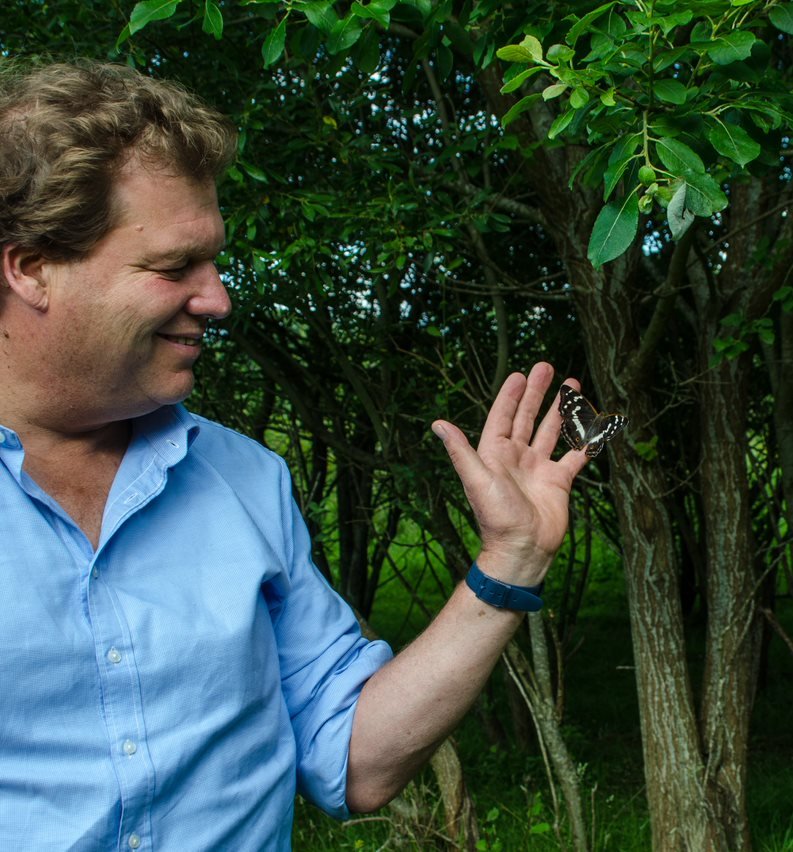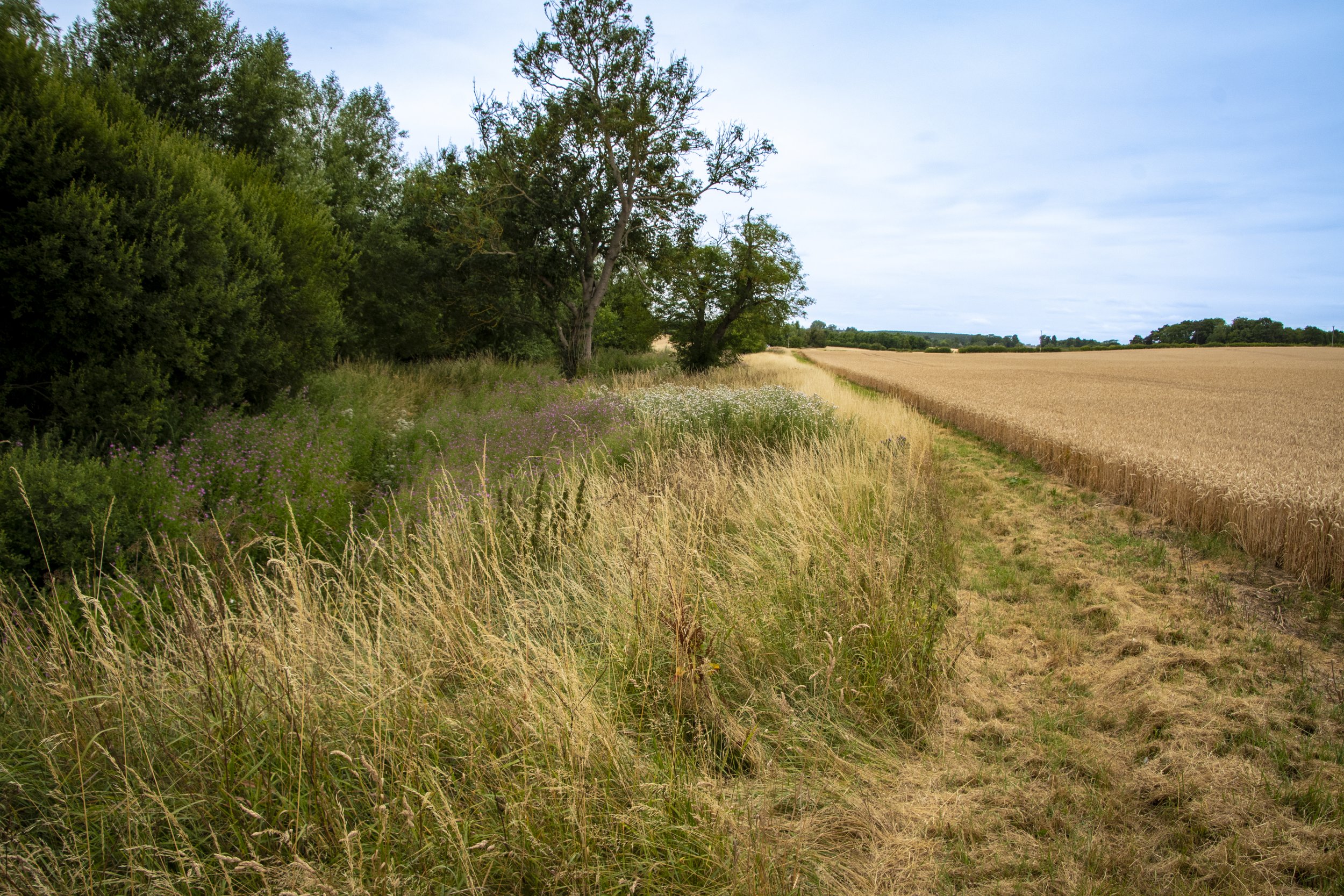Our vision for Nattergal
Our Nattergal Non-Executive Chairman Sir Charlie Burrell introduces our new blog, and explains why now is the right time to be delivering nature recovery at scale
With the world’s nature in crisis, the United Nations estimates we must spend at least $500 billion a year to halt the loss of biodiversity. We are not just talking about the Tropics, here, but also Europe and its seas, which have seen catastrophic declines in wildlife over the last few decades. In the UK we are in a particularly bad state. We’ve lost 50% of our wildlife since 1970. We’re in the bottom 10% globally for biodiversity loss, and last among the G7 group of nations.
Charlie with a Purple Emperor Butterfly at Knepp
Clearly, we need to come up with new ideas for restoring nature and the ambition must be not just to halt the loss but to reverse the trend – to turn the Titanic. We must restore the life-support systems on which we all depend. And we need to do this fast. Leaving the solutions to governments and the public sector is not enough. They do not have the resources, financing, nor – perhaps – the will to solve this crisis alone. In the UK, for example, the Green Finance Institute estimates we need to spend £8.8 billion a year to halt the loss of species in our country. The UK Government has currently committed around £2.7 billion a year to this, which leaves a spending gap of around £6.1 billion to be covered by the private sector.
At Knepp Castle, West Sussex, over the last 20 years, we have experienced a remarkable – some would say, miraculous – resurgence of wildlife, including some of the rarest species in the UK. It is certainly on a scale I had never imagined possible. The sheer abundance of species and complexity of the habitats that have emerged at Knepp since we allowed our depleted, unprofitable farmland to revert to nature is astounding. Rewilding brings back life.
At Nattergal, we have used the inspiration and evidence of Knepp to come up with a model that, I feel, provides real solutions for nature recovery. It can be used at scale and in multiple regions around the world, from the seabed to coastal wetlands to ecologically degraded, low-yielding farmland. Our model relies on identifying trusted partners from the corporate world to work with us, to provide that vital additional funding for nature. These will be companies that are looking for ways to offset their take from the planet, be it their carbon footprint and/or their impact on communities and biodiversity. Or they may simply be wanting to do something positive for nature, to become net-positive by investing in a rewilding project – something from which their business, staff, shareholders, consumers and customers alike can derive a sense of pride and inspiration.
Field margins at our first site - Boothby Wildland in Lincolnshire. These will be a seed source for the natural regeneration of the site.
Never has there been a more desperate time for this planet, our home. But never has there been a more exciting time, either. In just the last few years, we’ve seen a groundswell of concern for the environment around the globe, and this has sparked a transformation of attitude in the corporate and financial world towards nature and our consumption of its resources. The Kunming-Montreal pact signed at the end of 2022 at the COP15 for Biodiversity is a major achievement – the first ever global agreement to halt the destruction of Earth’s ecosystems. We believe this heralds a step change in our global response to nature protection and restoration.
Together, we will be able to transform depleted and less productive land into thriving ecosystems again. These new landscapes, held in perpetuity for and by our local communities, will be productive for both humans and wildlife. They will provide desperately needed services for our shared survival – restoring the soil, providing clean air and water, protecting life and property from floods and storms, and helping in the battle against climate change by storing carbon.
Over the coming months and years, our Nattergal blog and newsletter will bring you stories of what we are doing on the land that we manage, how nature is responding, and the partners and communities we are working with. It will also delve into some of the thinking we collectively need to embrace if we are to see the resurgence of nature in our lifetime, and a secure, prosperous and sustainable future for generations to come.
- Charlie Burrell, Nattergal Non-Executive Chairman and owner of Knepp Castle Estate


